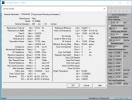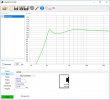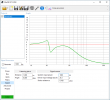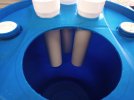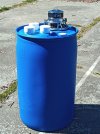It's been touched upon a few times, but the barrel itself is going to be a significant source of distortion. Rap on it with your knuckles or a stick. Does it sound like a drum? Probably. That will all be excited by the subwoofer unless heavily braced. When you knock on the enclosure, it should sound more like knocking on a stone or brick (in the extreme - it won't get there even in the most expensive, extreme subwoofers) than a drum.
When I build subs, based on research from Bill Fitzmaurice who has extensively studied AES papers, I brace so that there's no unsupported span longer than about 6" in the walls. That's using either 3/4" MDF or 3/4" Plywood. Bill does it with 1/2" plywood. YMMV with plastic, which may ring more than plastic.
When I build subs, based on research from Bill Fitzmaurice who has extensively studied AES papers, I brace so that there's no unsupported span longer than about 6" in the walls. That's using either 3/4" MDF or 3/4" Plywood. Bill does it with 1/2" plywood. YMMV with plastic, which may ring more than plastic.
